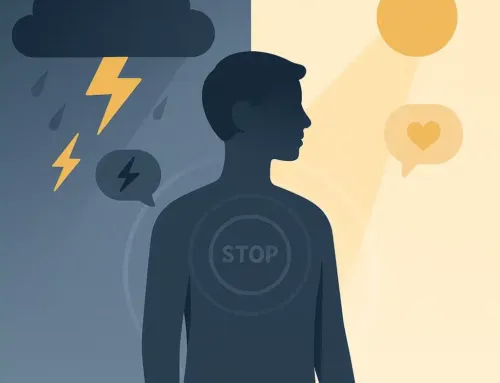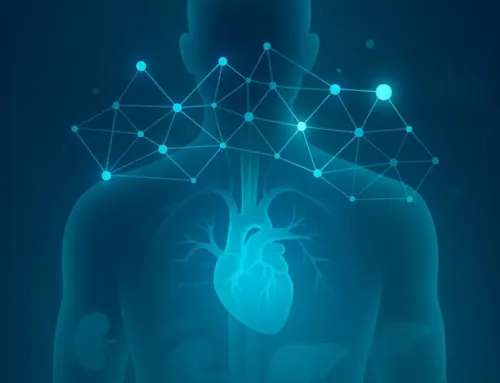
Approx. read time: 9.4 min.
Post: Understanding Statins: Their Impact on the Body’s Organs, Side Effects, and Long-Term Safety
Effects of statins on the body and long-term safety. Statins are one of the most commonly prescribed classes of medications, primarily used to lower cholesterol levels in the body. Their widespread use is driven by their proven effectiveness in reducing the risk of heart attacks, strokes, and other cardiovascular events. By inhibiting the enzyme HMG-CoA reductase, statins block the body’s production of cholesterol, leading to a reduction in “bad” LDL cholesterol and a modest increase in “good” HDL cholesterol.
While statins are celebrated for their cardiovascular benefits, their effects extend beyond cholesterol management. They influence various organs, potentially causing both positive and negative side effects. In this article, we will explore the full spectrum of statins’ impact on the body, including how they interact with other medications, the dangers of discontinuing them abruptly, their long-term safety, and the potential effects on mental health.
Statins and the Body’s Organs: The Positive and Negative Effects
1. The Heart and Blood Vessels (Positive Impact)
Statins are primarily used to protect the heart by lowering cholesterol levels. High cholesterol can lead to the buildup of plaques in arteries, known as atherosclerosis, which increases the risk of heart attacks and strokes. By reducing LDL cholesterol, statins help prevent these plaques from forming, allowing for improved blood flow and reduced risk of cardiovascular events.
- Reduction of Inflammation: Statins also have anti-inflammatory properties, which help stabilize existing plaques in the arteries, preventing them from rupturing and causing blockages that lead to heart attacks or strokes.
- Improved Endothelial Function: The endothelium is the lining of blood vessels, and statins improve its function, reducing the likelihood of blood clots and enhancing overall vascular health.
2. The Liver (Positive and Negative Effects)
Statins primarily target the liver, where cholesterol production occurs. However, their effects on the liver can be both beneficial and harmful.
- Positive: By reducing cholesterol synthesis in the liver, statins significantly lower LDL cholesterol in the bloodstream, thereby reducing the risk of cardiovascular disease.
- Negative: In some cases, statins can lead to liver enzyme elevations, indicating potential liver damage. This is why patients taking statins often have their liver enzymes monitored, especially during the early stages of treatment. Severe liver damage is rare, but it can occur, particularly in those with preexisting liver conditions.
3. The Muscles (Negative Impact)
One of the most well-known side effects of statins is muscle pain, known as myopathy or rhabdomyolysis in severe cases.
- Myopathy: Many patients experience muscle aches, tenderness, or weakness while on statins. This is a relatively common side effect, though the severity varies. The exact mechanism behind muscle pain is not fully understood, but it may involve statins interfering with muscle cell energy production.
- Rhabdomyolysis: In very rare instances, statins can lead to a serious condition called rhabdomyolysis, where muscle cells break down and release their contents into the bloodstream. This can lead to kidney damage, electrolyte imbalances, and even death if untreated.
4. The Kidneys (Negative Impact)
While rare, statins can negatively impact kidney function, particularly in the context of rhabdomyolysis. When muscle tissue breaks down, it releases a protein called myoglobin, which can clog the kidneys and lead to acute kidney injury. Patients with preexisting kidney conditions are often monitored closely when prescribed statins to mitigate this risk.
5. The Brain and Mental Health (Controversial Impact)
There has been debate surrounding the potential effects of statins on cognitive function and mental health. Some studies suggest that statins could contribute to memory loss or confusion, while others indicate that these effects are rare and reversible.
- Cognitive Impact: The FDA has acknowledged reports of memory loss and confusion among statin users, but these side effects are generally not severe and tend to disappear after discontinuation. A large review of studies has not found conclusive evidence to link statins with long-term cognitive decline.
- Mood and Depression: There is also some evidence that statins could affect mood. Cholesterol plays a role in brain function, and lowering it too much may influence neurotransmitter activity. However, the relationship between statins and depression is still unclear, with some studies finding an association and others not.
Side Effects of Statins
While statins are generally well-tolerated, side effects can occur. These side effects range from mild to severe, depending on the patient and dosage.
1. Common Side Effects
- Muscle Pain: As discussed earlier, myopathy is a common complaint among statin users.
- Digestive Issues: Some patients report nausea, indigestion, constipation, or diarrhea while on statins.
- Headache: Headaches are also relatively common, though usually mild.
- Sleep Disturbances: Some individuals experience difficulty sleeping or insomnia while taking statins.
2. Severe Side Effects
- Liver Damage: Elevated liver enzymes are a serious side effect, though rare. Symptoms may include yellowing of the skin or eyes (jaundice), dark urine, and severe fatigue.
- Rhabdomyolysis: As previously mentioned, this is a potentially life-threatening condition where muscle breakdown leads to kidney damage. Signs include severe muscle pain, weakness, dark-colored urine, and fatigue.
3. Rare Side Effects
- Cognitive Issues: Memory loss or confusion is considered a rare but possible side effect. Most cases are reversible upon discontinuation of the drug.
- Increased Blood Sugar: Statins have been linked to a slight increase in blood sugar levels, which may elevate the risk of developing type 2 diabetes, especially in patients who are already predisposed to the condition.
The Dangers of Stopping Statins Abruptly-Effects of statins on the body and long-term safety
One of the most important warnings regarding statin use is that you should never stop taking statins abruptly. Discontinuing statins without medical supervision can have severe consequences, particularly for those at high risk for cardiovascular events.
1. Rebound Effect on Cholesterol Levels
When statins are stopped suddenly, LDL cholesterol levels can rebound, sometimes surpassing pre-treatment levels. This can accelerate the buildup of plaque in the arteries, increasing the risk of heart attack or stroke.
2. Increased Risk of Cardiovascular Events
Research has shown that stopping statins abruptly can lead to a sharp increase in cardiovascular risk. A study published in The Journal of the American College of Cardiology found that patients who discontinued statins after a cardiovascular event were at a significantly higher risk of subsequent heart attacks or strokes compared to those who continued their medication.
3. Withdrawal Symptoms
Although rare, some patients report withdrawal symptoms after stopping statins, such as muscle pain or fatigue. These symptoms are typically mild but may persist for some time.
Are Statins Safe for Long-Term Use?
Statins are generally considered safe for long-term use, and their benefits often outweigh the risks, especially for individuals at high risk for heart disease. However, long-term use can come with certain considerations.
1. Liver Function Monitoring
Patients on long-term statin therapy should have their liver function monitored periodically. Though liver damage is rare, it is important to detect any early signs of liver issues, especially since statins primarily act on the liver.
2. Muscle Health Monitoring
Given the risk of myopathy, patients on statins for an extended period should also be vigilant about muscle pain or weakness. In some cases, dosage adjustments or switching to a different statin may be necessary.
3. Risk of Diabetes
Long-term statin use has been linked to a small increase in the risk of developing type 2 diabetes, particularly in patients with preexisting risk factors such as obesity or metabolic syndrome. However, the cardiovascular benefits of statins typically outweigh this risk.
Statins and Mental Health: Impact on Mood and Cognition-Effects of statins on the body and long-term safety
The relationship between statins and mental health is complex, and ongoing research is exploring how cholesterol-lowering drugs may affect mood and cognitive function.
1. Cognitive Impairment Concerns
While some studies suggest a link between statins and memory issues, large-scale reviews have not found convincing evidence of significant cognitive decline in statin users. Any memory-related side effects tend to be mild and reversible upon stopping the drug.
2. Impact on Depression and Anxiety
Some researchers have hypothesized that statins could influence mood by lowering cholesterol levels, which may affect the brain’s production of serotonin and other neurotransmitters. However, studies examining the relationship between statin use and depression have produced mixed results. More research is needed to understand whether statins have any meaningful impact on mood disorders.
Drug Interactions: Medications That Affect Statins-Effects of statins on the body and long-term safety
Statins can interact with other medications, sometimes leading to dangerous side effects or reduced effectiveness. It’s crucial to inform your healthcare provider about all medications you’re taking to avoid complications.
1. Medications That Increase the Risk of Muscle Damage
- Fibrates: Cholesterol-lowering medications like gemfibrozil can increase the risk of statin-induced muscle damage.
- Certain Antibiotics: Drugs like clarithromycin and erythromycin can increase statin concentrations in the blood, leading to a higher risk of side effects.
- Antifungal Medications: Medications like ketoconazole and itraconazole can also elevate the risk of muscle pain or liver damage when taken with statins.
2. Blood Thinners
Statins can interact with blood thinners such as warfarin, increasing the risk of bleeding. Regular monitoring of blood clotting levels is often necessary when combining these medications.
3. Immunosuppressants
Drugs like cyclosporine can raise statin levels in the blood, increasing the risk of muscle and liver damage. Dosage adjustments or careful monitoring may be needed when taking these medications together.
Warnings and Recent Research Studies on Statins
1. The Diabetes Risk
As previously mentioned, recent studies have confirmed a slight increase in the risk of developing type 2 diabetes among statin users, particularly those on higher doses or with existing risk factors. A 2019 meta-analysis published in The Lancet found that statins slightly increased the risk of new-onset diabetes, but the overall cardiovascular benefits of the drug still outweigh this risk for most patients.
2. Statins and Cancer Risk
Concerns about statins potentially increasing cancer risk have been investigated extensively. To date, there is no convincing evidence that statins raise the risk of cancer. In fact, some research suggests that statins may have a protective effect against certain cancers, though this remains a topic of ongoing study.
Conclusion-Effects of statins on the body and long-term safety
Statins are a cornerstone of cardiovascular disease prevention, offering significant benefits in reducing cholesterol and preventing heart attacks and strokes. However, they are not without their risks. Potential side effects range from mild muscle pain to severe liver damage, though the latter is rare. Patients must weigh these risks, particularly if they are on statins long-term. Importantly, statins should never be stopped abruptly due to the risk of rebound cholesterol levels and increased cardiovascular events.
While research into statins’ cognitive and mental health effects is ongoing, most patients tolerate them well, and their heart-protective benefits often outweigh potential drawbacks. Nevertheless, monitoring for side effects and drug interactions is crucial, especially when statins are used in combination with other medications.
In short, statins remain a safe and effective treatment for most people, but their use must be carefully managed with the help of a healthcare provider.
Related Videos:
Related Posts:
Understanding Fatty Liver Disease and the Role of Gut Health
The Seven-Day Steak Diet: Evaluating the Risks and Effects on Health
Importance of Cardio, Strength, and Stability for All Ages
CBT vs. Medications for Anxiety and Depression: Benefits and Strategies
The Importance of a Healthy Musculoskeletal System for Longevity and Overall Health









